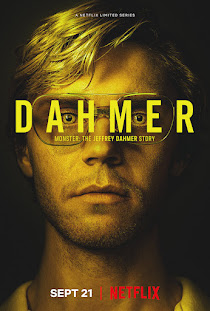D1 Codes & Conventions Radio - Unit 14
Introduction
In this report, I will research codes and conventions of the radio genre and how I have embedded them into my radio show. Furthermore, I will elaborate on my pre-production documents and how I have embedded radio show conventions into them, specifically referencing back to LO1 and LO2 when I researched a radio show of my choice.
Comparison
In order to prepare for the production and post production stage of my radio show, I was required to create a handful of pre production documents which will inevitably make the production and pre production stage for efficient and organised. The most important pre production document being the script for my radio show. When writing my script, I ensured that I was including the conventions that I have researched when researching my chosen radio station. Researching into an existing radio show before writing my script was beneficial due to the fact that it informed me on how radio stations are structured and allowed me to write my script like how other radio stations would write their script. Firstly, my script has an introduction where I explain what type of show the people are listening to and what is going to occur so that they can judge whether they are interested and want to stay and listen. My target audience is adults or older people who usually have longer attention spans and are more interested in something with a slower pace therefore my introduction is not rushed or energetic like it would need to be if it was targeted towards a younger audience. It is vital that a radio show has an introduction and doesn't just jump straight into whatever is going to be discussed or featured on the show, this is so listeners can decide whether it would be a show that is interesting to them or not. If somebody is listening to a show and it doesn't have an introduction, they may think that the radio show is unstructured and therefore unprofessional and not worth their time. The people who are tuning in to listen to your show are spending their time dedicated to your show; therefore it has to be gripping enough to intrigue them and it needs to be catered towards a specific target audience so that people will enjoy listening. I learnt about radio show target audiences when researching my chosen radio station, which was the Airport Information Radio, because it has a very clear target audience: people who are near the airport or travelling to the airport and want to know necessary information about it. I chose to research about this radio station because it has similarities to mine since both were about aviation and both have a clear target audience catering more towards adults. Researching this radio station helped me define my own target audience for my radio program and assisted me in writing my script because of this.
To add to this, I ensured that I was inserting my research of radio shows into all the sections of my radio show, including my call ins, my advert and my conclusion. The Airport Information Radio helped teach me about target audiences and why they are important since that radio station had such a defined target audience, this helped me in multiple aspects including scripting the call ins. Both the call ins for my radio show are two older people, one female and one male who both have insight about the local area and specifically the nearby airport since my radio show is based on aviation in the local area (Doncaster and South Yorkshire). I figured that since my target audience is middle aged adults to elderly people, they would be much more interested listening to somebody around their own age range who they can relate to talk about aviation rather than a young person who might not be as knowledgeable as they haven't been around for as long. This is especially because a majority of elderly people prefer communities they are familiar with.
Codes
There are four codes of radio that are usually included in each radio program, including mine. These four codes are speech, music, sound and silence and each one will be in my radio show at some point however some much more than others. These radio codes have been used in the radio show that I researched and this has helped me become more knowledgeable on these codes so that I can effectively implement them into my radio program. The radio show that I researched (Airport Information Radio) also used these codes a different amount. Firstly, the AIR primarily use the code of speech as the radio station has the purpose to inform, therefore speech is the main code as this is how the presenters portray their main information. Furthermore, the radio show experimented with music as at one point they tried to play music at certain times of the radio, as well as portraying information about the nearby airports. Although, they decided to stop this after a while, meaning that music was a code used throughout the lifetime of the radio station but not as much as speech. Sound and silence are used in every radio show regardless of the theme or the purpose of it. This is because there will always be silence at some point during your show, unless you have music playing constantly in the background which is unlikely. During the Airport Information Radio's programs, there would be temporary silence after the presenter has just finished discussing any relevant information involving the nearby airports. Additionally, a jingle are used in almost every radio show including the Airport Information Radio and this falls into the sound code. Therefore, the AIR made use of each radio code which helped me be more aware of these codes and implement them myself.
Although I am going to implement these codes into my own show, I have to ensure that I am using them correctly and effectively otherwise it could cause problems which would effect the production on my radio show. One of these being the silence code, if I use this code too much it would make my radio seem unprofessional if there was long extended silence throughout my radio show; this would bore my listeners and they would not want to listen to my radio show again if they thought each program is filled with too much silence. Another example is if I overuse the music code, as my programs purpose isn't to play music if I involve it too much it will bore my listeners. If they wanted to listen to a radio station which specialised in music they would've chosen one and not a radio station about history and aviation.
Jingles
All successful radio shows have jingles, a jingle is a short sound effect used throughout a radio show which is unique to the specific radio station. It is often a recognisable feature so that listeners are aware of what radio station they are listening to and the jingle often correlates with the theme of the radio station. For example, a radio station that primarily plays music may have a jingle with music involved, not only does this allow the listener to recognise the station they are listening to but also gives them a rough idea of what the radio show might entail or be about. I considered a multitude of different jingle sound effects before setting on my final decision, my research into other radio stations helped me make this decision as I was aware I needed to choose a distinctive and unique sounding jingle that also links with the theme of my radio show. Therefore, the jingle I chose is the sound of a tape rewinding; I chose this because it is a distinctive jingle that no other radio show has and it fits with the theme of my radio show. My radio show is about the heritage and history of Doncaster, specifically aviation history in the specific episode that I am recording for this unit, for that reason, the sound of a tape rewinding perfectly represents my radio station because it signals time going backwards. My radio show is like a 'blast from the past' for my older listeners and will take them back to their younger days since I am talking about things long gone. Therefore, the sound of the tape rewinding portrays how my radio station will transport the listener back in time.
I am going to use my jingle in multiple different instances, the first time being at the beginning of the show. It is imperative to have your jingle during the introduction of your radio show because that is when it informs the listeners what radio station they are listening to as it is unique to your station. Furthermore, I am going to implement my jingle into my radio show before and after the advert so portray how the advert is about to start and when the advert has ended and we are back to the main body of the radio show. I am going to do this by using Adobe Audition.
Dialogue
Dialogue is featured in every radio station and it is imperative that what you are saying is catered towards your target audience. In my radio show, I am going to talk in an ordinary pace; this is because my target audience is middle aged adults and elderly people and they would not be as interested in listening to a radio show if it is upbeat, energetic and quick paced as the majority of them would prefer to sit and relax and listen to a more natural paced show. This links back to the research that I conducted on the Airport Information Radio (AIR) because I listened to a recording of one of their shows and by doing this I was able to observe how they addressed their audience and how they made use of dialogue to target their desired audience. Due to the fact that the radio station's purpose was to inform people about what is occurring at the airports in London, they had to speak at a ordinary pace so that people could easily hear what they are saying so they did not miss out on any important information. To add to this, they had to ensure they spoke in a clear accent because it is imperative that all the listeners can hear exactly what the presenter is saying.
Bibliography
“Radio Mercury.” Www.localradioarchive.co.uk, www.localradioarchive.co.uk/radio_mercury/airport_information_radio.php. Accessed 20 May 2024.
Ofcom. “TV and Radio Broadcasting Codes.” Ofcom, 5 Mar. 2019, www.ofcom.org.uk/tv-radio-and-on-demand/broadcast-codes.




Comments
Post a Comment